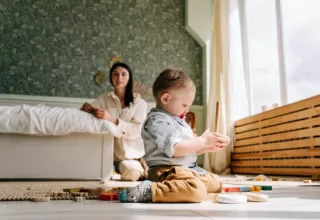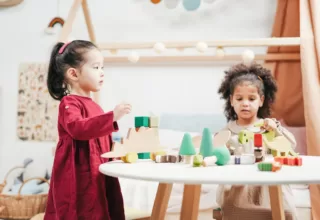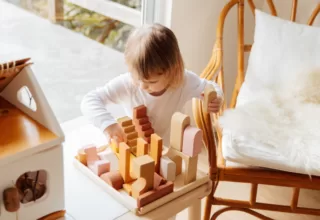What Types of Wooden Toys are Best for Babies?
Outline
- Introduction
- Benefits of Wooden Toys for Babies
- Safety Considerations
- Types of Wooden Toys for Babies
- Developmental Benefits.
- Factors to Consider When Choosing Wooden Toys
- Tips for Maintaining Wooden Toys
- Eco-Friendly and Sustainable Nature of Wooden Toys
- Recommended Wooden Toy Brands
- Budget-Friendly Options
- Where to Buy Wooden Toys for Babies
- Frequently Asked Questions (FAQs)
- Conclusion
Introduction
Toys play a vital role in a baby’s development, offering them opportunities to learn, explore, and engage with the world around them. When it comes to choosing toys for babies, wooden toys are often considered an excellent option. Not only are they visually appealing, but they also provide numerous benefits for a baby’s growth and development.
Benefits of Wooden Toys for Babies
Wooden toys offer several advantages over their plastic counterparts. Firstly, they are more durable, withstanding the test of time and the rough handling of little hands. Unlike plastic toys that can easily break or become damaged, wooden toys are built to last, making them a great investment.
Additionally, wooden toys are generally safer for babies. They are free from harmful chemicals such as phthalates and BPA that are commonly found in plastic toys. Babies have a natural tendency to explore the world by putting things in their mouths, and with wooden toys, parents can have peace of mind knowing that their little ones are not exposed to potentially toxic substances.
Safety Considerations
While wooden toys are generally safe, it’s essential to choose toys specifically designed for babies. Ensure that the toys have smooth edges and are free from any splinters or rough surfaces that could potentially harm the baby. Additionally, always check for any small parts that could pose a choking hazard.
Types of Wooden Toys for Babies
There is a wide range of wooden toys available for babies, each serving a different purpose in their development. Here are some popular types:
Rattles and Teething Toys
Rattles and teething toys are perfect for stimulating a baby’s senses and providing relief during the teething phase. The natural texture and gentle rattling sounds of wooden rattles can engage a baby’s attention and aid in their auditory and fine motor skill development.
Stacking and Sorting Toys
Stacking and sorting toys help babies improve their hand-eye coordination, problem-solving skills, and spatial awareness. Wooden blocks or rings of various sizes can be stacked, sorted, and arranged in different ways, encouraging creativity and cognitive development.
Shape Sorters and Puzzles
Shape sorters and puzzles are excellent wooden toys for promoting cognitive development and problem-solving skills in babies. These toys typically feature different shapes that need to be matched and inserted into corresponding holes or puzzle boards. They encourage logical thinking, spatial recognition, and fine motor skills.
Pull Toys
Pull toys are a classic favorite among babies. These toys usually consist of a wooden animal or object attached to a string or rope that can be pulled along. Pull toys enhance gross motor skills, coordination, and balance as babies learn to navigate their surroundings while pulling their adorable companions behind them.
Activity Centers and Play Gyms
Activity centers and play gyms provide a multi-sensory experience for babies. These wooden structures often feature hanging toys, mirrors, textured surfaces, and interactive elements. They promote visual tracking, reaching, grasping, and overall physical development. Activity centers and play gyms create a safe and engaging space for babies to explore and interact.
Developmental Benefits
Each type of wooden toy offers unique developmental benefits for babies. Rattles and teething toys aid in sensory exploration and soothe discomfort during teething. Stacking and sorting toys foster problem-solving abilities and fine motor skills. Shape sorters and puzzles enhance cognitive abilities and hand-eye coordination. Pull toys promote gross motor skills and balance. Activity centers and play gyms stimulate various senses and encourage overall physical development.
Factors to Consider When Choosing Wooden Toys
When selecting wooden toys for babies, there are a few essential factors to consider. First, ensure that the toys are age-appropriate and meet safety standards. Consider the size of the toy to avoid any potential choking hazards. Opt for toys made from high-quality, non-toxic materials. Additionally, choose toys that are durable and can withstand the inevitable rough play and teething that babies engage in.
Tips for Maintaining Wooden Toys
To keep wooden toys in good condition, it’s essential to follow simple maintenance guidelines. Avoid submerging wooden toys in water or exposing them to excessive moisture, as this can cause damage. Instead, clean them with a damp cloth and mild soap if necessary. Regularly inspect the toys for any signs of wear or loose parts and repair or replace them as needed.
Eco-Friendly and Sustainable Nature of Wooden Toys
One significant advantage of wooden toys is their eco-friendly and sustainable nature. Unlike plastic toys that contribute to pollution and landfill waste, wooden toys are often made from renewable resources and are biodegradable. By choosing wooden toys for babies, parents can promote environmental consciousness from an early age.
Recommended Wooden Toy Brands
When it comes to wooden toys, several brands have established a reputation for producing high-quality and safe products. Some popular and recommended brands include Melissa & Doug, Hape, PlanToys, Grimm’s, and Manhattan Toy. These brands prioritize safety, durability, and the use of non-toxic materials in their toy manufacturing.
Budget-Friendly Options
While some wooden toys can be quite pricey, there are budget-friendly options available that don’t compromise on quality. Look for local artisans or smaller brands that offer handmade wooden toys at more affordable prices. Online marketplaces and second-hand stores can also be great sources for finding gently used wooden toys at a fraction of the original cost.
Where to Buy Wooden Toys for Babies
Wooden toys for babies can be purchased from a variety of sources. Online retailers such as Amazon, Etsy, and dedicated toy websites offer a wide selection of wooden toys from different brands. Local toy stores and specialty shops often carry a range of wooden toys as well. It’s also worth checking out craft fairs and markets where artisans may showcase their handmade wooden toys.
Conclusion
Choosing the right toys for babies is crucial for their development, and wooden toys offer numerous benefits. From their durability and safety to their developmental advantages, wooden toys provide a wholesome play experience. By considering factors such as toy types, safety considerations, and maintenance tips, parents can confidently select the best wooden toys for their little ones, fostering their growth and enjoyment.
Frequently Asked Questions (FAQs)
Q: Are wooden toys safe for babies to chew on?
A: Yes, wooden toys designed for babies are generally safe for chewing. However, always ensure that the toys are free from small parts or coatings that could pose a choking hazard. Look for toys specifically labeled as non-toxic and designed for teething.
Q: How can I ensure the wooden toys I choose are sustainably sourced?
A: Look for wooden toys that are made from sustainably harvested wood, preferably with certifications such as FSC (Forest Stewardship Council). These certifications ensure that the wood used in the toys comes from responsibly managed forests.
Q: Can wooden toys be cleaned easily?
A: Yes, wooden toys can be cleaned easily. Use a damp cloth with mild soap to wipe the toys clean. Avoid immersing them in water or using harsh chemicals as this can damage the wood or finishes.
Q: At what age can babies start playing with wooden toys?
A: Babies can start playing with wooden toys as early as three to six months. However, always choose toys appropriate for their age and developmental stage.
Q: Are there any specific safety standards for wooden toys?
A: Different countries may have specific safety standards for toys. Look for toys that comply with relevant safety regulations, such as ASTM F963 in the United States or EN71 in the European Union.
How useful was this post?
Click on a star to rate it!
Average rating 4.5 / 5. Vote count: 2
No votes so far! Be the first to rate this post.



